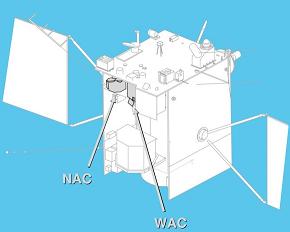Rosetta orbiter showing narrow-angle and wide-angle cameras.
Click on image for full size
Image courtesy NASA.
Rosetta instruments
The Rosetta spacecraft has many instruments that it will use to measure various aspects of
Comet
Churyumov-Gerasimenko during its visit.
This diagram shows the two cameras that make up the OSIRIS imaging system: the Narrow-Angle Camera (NAC) and the
Wide-Angle Camera (WAC). The two cameras are shown in gray in the diagram.
The instruments on the Rosetta orbiter are described in detail in the table below.
The instruments on the Rosetta lander are described on a separate page.
You might also be interested in:
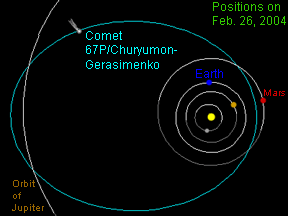
Comet 67P/Churyumov-Gerasimenko was discovered in 1969 by Klim Churyumov and Svetlana Gerasimenko. The comet orbits the Sun once every 6.57 years. Its orbit brings it closer to the Sun than Mars at the
...more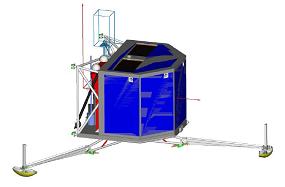
The Rosetta lander has many instruments that it will use to make measurements when it lands on Comet Churyumov-Gerasimenko. The instruments carried by the lander are described in detail in the table below.
...more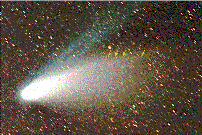
Hale-Bopp continues to offer surprises as astronomers study the comet. Using the Hubble Space Telescope and the International Ultraviolet Explorer, astronomers have found that there are distinctly different
...more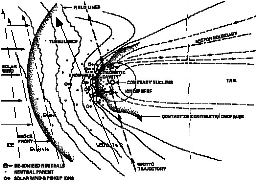
Six spacecraft flew by Halley's comet in 1986. There were two spacecraft launched from Japan, Suisei and Sakigake, and two from the Soviet Union, Vega 1 & 2. One spacecraft, ICE, from the United States
...more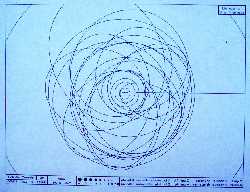
Comets are observed to go around the sun in a long period of time or a short period of time. Thus they are named "long-period" or "short-period" comets. One group of short-period comets, called the Jupiter
...more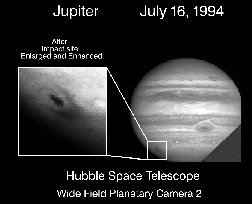
Scientists have learned a great deal from the crash of comet Shoemaker-Levy 9. Scientists traced the orbit of the comet backwards in time to guess its origin. This calculation, along with the discovery
...more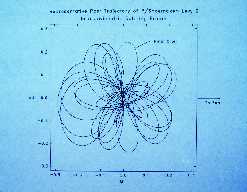
Mathematical theory suggests that comet Shoemaker-Levy 9 was likely a short-period comet which was captured into orbit around Jupiter in 1929 and began to execute the trajectory plotted in this diagram.
...more


